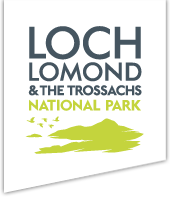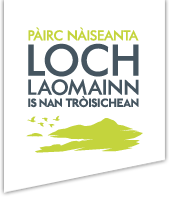
Practical Steps for Improved Accessibility
Contents
Information
Let your customer know
Some further communication ideas
Staff training
Measuring success
Planning ahead
Advance bookings
VisitScotland links
Information
Research has shown that 95% of disabled people look for access information before visiting a new venue and 72% are more likely to visit if they feel that they will be welcomed by staff.
Relevant information about your venue, event or service is vital for customers making decisions about their destination choice and visiting specific business venues for the first time. Creating an Accessibility Guide is a great starting point to enable this information to be made readily available and is simple to produce. A free online guide is available – see www.accessibilityguides.org for further information.
An Accessibility Guide will enable any tourism-related business to capture all of the relevant accessible information in one place. Taking the time to think this through and to compile information in a guide will pay for itself in the additional business and new customers who will be more likely to visit once they have confidence that their accessible needs can be met.
Let your customer know
Once you have created your Accessibility Guide, share it! Place a link to your Guide on the homepage of your business website and spread the word using social media. Euan’s Guide – a review site for disabled people and their family and friends is an excellent online resource that is widely used as a key point of information. Adding your business to the Euan’s Guide website, including information letting customers know how you can support their visit is an excellent way to promote your business and enable visitors to make an informed choice for their travel plans.
Further opportunities to promote accessibility initiatives can include using more inclusive photography and video content. A free image library to access imagery and enhance your marketing material is available online at Scotland Is Now.
Further to a regular online listing, there is also the annual Disabled Access Day which provides a great opportunity for businesses to showcase their accessible services as part of a national programme.
Some further communication ideas:
- Consider a dedicated Accessibility section on your website giving details about your accessibility provision, dedicated facilities and a link to publish your Access Statement. It is also an opportunity to highlight any limitations, for example, if you have an older / listed building that would be difficult to modify and suggest alternative arrangements that could be made. It is also an opportunity to showcase that staff have completed awareness training and that staff will be happy to discuss individual requirements and support visitors, answering questions in advance of the customer’s visit. Remember to include clear contact details (phone, email, postal address), for the customer to contact in a way that is easiest for them.
- Including photos on your website – any promotional literature with images can be helpful and can provide as much information as a written description whilst being more accessible for individuals with learning disabilities or those who speak another language.
- Providing subtitles or sign language interpretation for promotional videos will enable these to be accessed more readily by people with hearing impairments.
- Speak to your website Developer about making your website more accessible. Elements of the website design such as colours, text size and use of images can improve the website considerably. Further guidance can be found on the Royal National Institute for the Blind (RNIB) website.
- Ensure that the terminology that you are using is suitable and contributes to a welcoming message. The UK Government website has a handy list of terms to be avoided and those phrases which should be used.
- Ensure that your business information is correct and up-to-date on third party websites, for example, if using online booking agents, or for listing your business with VisitScotland and other regional promotional websites.
- Customer feedback and the content of customer enquiries will help to highlight areas which may not yet have been considered and could therefore be included in the Access Statement.
Staff training
Customer-facing employees need to have the confidence to provide the best welcome and support for everyone.
There are many ways to improve accessibility in addition to any physical changes to a facility including changes to communication style, attitude and simply making people feel welcome.
Ensuring that all staff and management within your venue are trained and confident will make a real difference to the overall customer experience.
Disability Awareness training will help staff to be more conscious of access requirements and will improve how they can support the visitor experience.
Free online training courses are a simple way to enable staff to develop their awareness. VisitScotland offers an accredited online course which takes around 90 minutes to complete.
Leadership within your venue and adopting systems to remind and reinforce the message of service excellence and accessibility measures will continue to maintain standards and awareness of how to consistently help visitors. This can be done as part of team meetings, staff communications such as emails and newsletters, refresher training and reminder notices in ‘back-office’ areas.
For new staff members, including information on accessibility and providing all members of staff with an Accessibility Statement could be part of the induction process and will provide all staff with the required briefing and awareness of the accessibility measures in your venue.
Measuring success
Customer feedback is a great way to understand if the measures that have been implemented have worked or if any further actions are required to improve the welcome, services and facilities. It is worth taking time to observe and experience the customer welcome and how the service is delivered by your team at all touch points within your venue. Research has found that disabled customers would be more likely to return to places that listen and try to improve things, even if some facilities are not always fully accessible.
There is a review function on Euan’s Guide for visitors to post feedback on their visit. Other review websites such as TripAdvisor may also contain customer feedback relating to experiences of customers with additional needs and are worth monitoring, replying to online and using the feedback information as a basis for identifying where improvements can continue to be made.
Planning ahead
The process of planning and thinking about accessibility can be of great benefit to your business premises to incorporate within any renovation works or service improvements. This is also of particular relevance to event management. Thinking about accessibility in the early planning stages will make the resulting delivery more effective than if it was as an add-on. This will also avoid any retrospective changes and the planning process can be replicated for future, subsequent events. Seeking advice and input from accessibility charities or VisitScotland’s dedicated Inclusive Tourism services can help you find the best way forward to meet the needs of all visitors.
Advance bookings
Your booking form or ticket sales site is an opportunity to gain information from the customer in advance of their visit to understand what access requirements they need. This information can then be communicated to operational staff who will be on hand to support at the time of arrival and throughout the experience at your venue.
For visitor attractions and events which require booking tickets in advance, consider offering a range of booking methods (phone, online and by post). You could also consider holding the tickets at the venue to enable the customer to collect on arrival.
Consider your policy and arrangements for carers or support workers. For example, you could offer support workers free admission, a reduced fee, or only charge for elements of the visit such as food, drink or other retail items.
VisitScotland links
VisitScotland has produced a suite of free downloadable good practice guides and advice sheets.
Easy does it: Simple, low-cost changes to benefit you and your visitors

